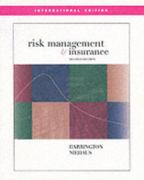


Please explain
2. You are a monopolist facing the following demand schedule. You produce an output at a constant average and marginal cost of $12. Price Quantity 520 1 18 2 16 3 14 4 3. Calculate marginal revenue (MR) for each level of output. b. Find the profit-maximizing price and quantity. c. How much economic profit will you earn? 3. The following table lists the percentage of market share for 6 firms in the toy industry. Firm Market Share A 40% 6% 14% 2% 3% 35% 'I'Il'l'lonw a. What is the 4-firm concentration ratio (CR4) in this industry? b. What is the Herfindahl-Hirschman Index (HHI) for this industry? c. According to the CR4 and HH| measures, would you consider the toy industry (above) to be an oligopoly and why? 4. Two gas stations, A and B, are locked in a price war. Each player has the option of raising its price (R) or continuing to charge the low price (C). They will choose strategies simultaneously. If both choose C, they will both suffer a loss of $100. If one chooses R and the other chooses C, (i) the one that chooses R loses many of its customers and earns 50, and (ii) the one that chooses C wins many new customers and earns $1000. If they both choose R, the price war ends and they each earn $500. a. Draw the payoff matrix for this game. b. What is the optimal strategy? c. Does player A have a dominant strategy? Explain. d. Does player B have a dominant strategy? Explain. e. How many Nash equilibria does this game have? f. What course of action will players A & B choose? 5. Use the diagram below to determine the price and quantity for: a. a perfectly competitive, profit-maximizing industry? b. a profit-maximizing monopoly? c. maximum total revenue? d. allocative efficiency? e. dynamic efficiency? 6. Use the diagram below to determine the economic profit for the monopolist. 7. Use the diagram below to determine the value of dead-weight loss for the monopolist. MC AC N WA D 12 20 24 30 7Q MR1. Lisa's Lawn Company (LLC) is a lawn-mowing business in a perfectly competitive market for lawn-mowing services. The following table describes Lisa's costs. Quantity (lawns per hour) Total Cost (dollars per lawn) $30 40 55 75 100 130 165 a. If the market price is $30 per lawn, how many lawns per hour does Lisa's LLC mow? b. If the market price is $30 per lawn, what is Lisa's profit in the short run? c. If the market price falls to $20 per lawn, how many lawns per hour does Lisa's LLC mow? d. If the market price falls to $20 per lawn, what is Lisa's profit in the short run? e. At what market price will Lisa shut down? f. When Lisa shuts down, what will be her economic loss













